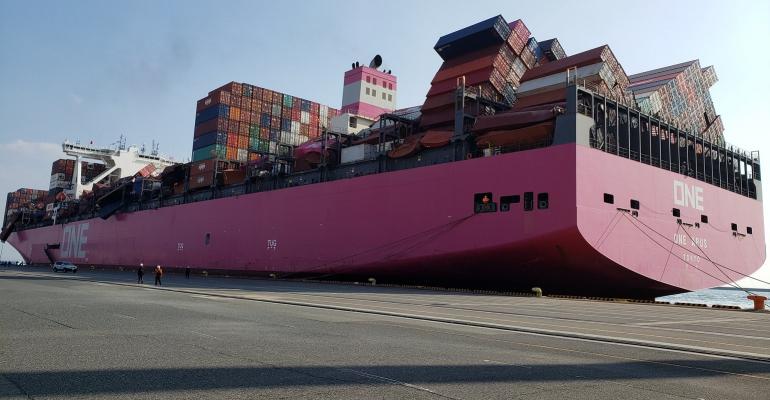The Ocean Network Express (ONE) operated vessel lost around 60 containers overboard and suffered damage to a further 80 in the North Atlantic.
Such incidents are of serious concern to operators, cargo owners, and insurers, and have increased over the last 18 months. The specifics of the stack failure on the Madrid Bridge are not known, however, at a broader level there are causes for such incidents that the industry can prepare for and mitigate.
Seatrade Maritime News asked Mohit Oberoi Founder and Director of Solverminds Solutions about their view on causes of container stack collapses and what measures can be taken.
One of the issues of concern has been the growing size of container vessels and stack height. Oberoi, explained: “Stack height on larger vessels are potential reasons for stack collapse.
“Forces on containers stacks depend upon, vessel length, service speed, centre of gravity of each container, centre of gravity and stability of vessel condition and wind/weather factor. Increase in these factors increase forces on stacks. Some of these parameters are vessel related and others stack height related.”
There can also be issued caused by the incorrect stowage of containers. “If very heavy units are put on top of light containers then lifting forces in front side of containers increase significantly and can easily breach the force limits or if very heavy boxes are stowed then compression forces increase that may cause stack collapse,” he said.
“How the weights are distributed have an impact on containers forces. That is why before approving the stow Master of vessel checks the lashing forces and if all forces are within limits then stow is approved for terminal to load the vessel.”
In terms of what can be done to minimise risk through the stowage of containers Oberoi explained:” While stowing containers general idea should be to minimise lashing forces while maximising load. To do this planning manually may take a long time thus there is a need of an optimisers to distribute the load to achieve the objectives of good stowage practices.
“With large vessels it is more and more difficult to achieve these objectives in given limited time. Therefore a new way to plan vessels has to be adopted using container stowage optimisers,” he said.
Asked if risks could be mitigated by reducing cargo loads or types of cargo carried in specific areas of the vessel, he said: “If the cargo weights and strength of container are correct then stacks can be simulated in software to ensure they comply with rules. However, as a general practice it may be better to put light loads at the ends of the vessel and keep lashing forces well within the limit.”
Copyright © 2024. All rights reserved. Seatrade, a trading name of Informa Markets (UK) Limited.
Add Seatrade Maritime News to your Google News feed.  |

